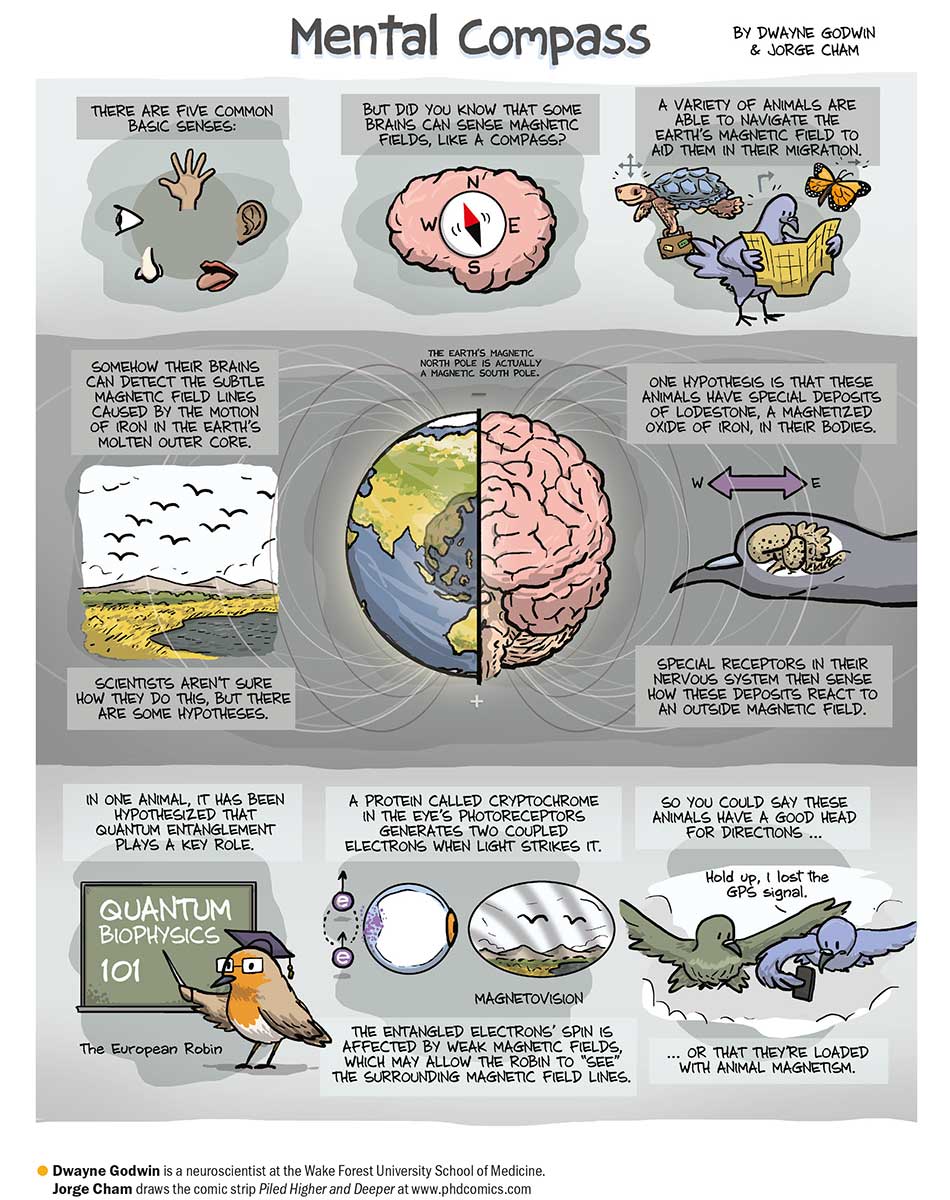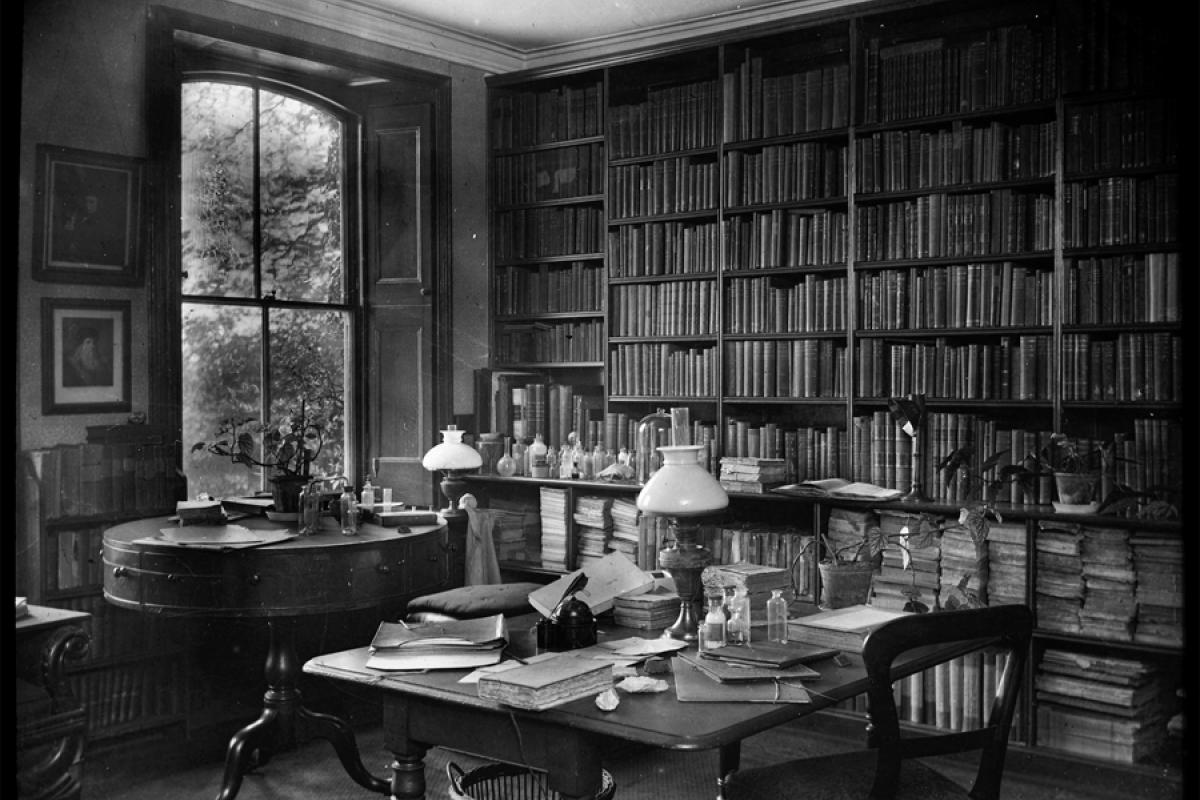We shouldn’t pass April 19 — a day marked by significant historic events through the past couple hundred years — without remembering that it is also the anniversary of the death of Darwin.

Charles Darwin in 1881, portrait by John Collier; after a Collier painting hanging in the Royal Society
Immortality? Regardless Darwin’s religious beliefs (I’ll argue he remained Christian, thank you, if you wish to argue), he achieved immortality solely on the strength of his brilliant work in science. Of course he’s best known for being the first to figure out that natural and sexual selection worked as tools to sculpt species over time, a theory whose announcement he shared with Alfred Russel Wallace, who independently arrived at almost exactly the same theory but without the deep evidentiary backup Darwin had amassed.
But had evolution turned out to be a bum theory, Darwin’s other works would have qualified him as one of the greatest scientists of all time, including:

Darwin’s theory set out a sequence of coral reef formation around an extinct volcanic island, becoming an atoll as the island and ocean floor subsided. Courtesy of the U.S. Geological Survey (Photo credit: Wikipedia)
US Geological Survey graphic demonstrating how coral atolls form on the sinking remains of old volcanic sea mounts, as Darwin described. Wikimedia commons image
- World’s greatest collector of biological samples: During his five years’ voyage on HMS Beagle, Darwin collected the largest collection of diverse plant and animal life ever by one person (I believe the record still stands); solely on the strength of his providing actual examples to the British Museum of so much life in so many different ecosystems worldwide, before he was 30 Darwin won election to the Royal Society. (His election was engineered partly by friends who wanted to make sure he stayed in science, and didn’t follow through on his earlier plan to become a preacher.)
- Geology puzzle solver: Coral atolls remained a great geological mystery. Sampling showed coral foundations well below 50 feet deep, a usual limit for coral growth. In some cased old, dead coral were hundreds of feet deep. In the South Pacific, Darwin looked at a number of coral atolls, marvelous “islands” that form almost perfectly circular lagoons. Inspired partly by Lyell’s new encyclopedic review of world geology, Darwin realized that the atolls he saw were the peaks of volcanic mounts. Darwin hypothesized that the volcanoes grew from the ocean floor to the surface, and then the islands were colonized by corals. The round shape of the volcano gave the atoll its shape. Then the volcanic mounts eroded back, or sank down, and corals continued to grow on the old foundations. It was a perfectly workable, natural explanation for a long-standing geologic puzzle. (See Darwin’s monograph, Structure and Distribution of Coral Reefs.)
- Patient watcher of flowers: Another great mystery, this time in biology, concerned how vines twined themselves onto other plants, rocks and structures. Darwin’s genius in designing experiments shone here: He put a vine in his study, and watched it. Over several hours, he observed vine tendrils flailing around, until they latched on to something, and then the circular flailing motion wrapped the tendril around a stick or twig. Simple observation, but no one had ever attempted it before. (See On the Movements and Habits of Climbing Plants.)
- Champion of earthworms, and leaf mould: Darwin suspected the high fertilizer value of “leaf mould” might be related to the action of earthworms. Again, through well-designed experiments and simple observation, Darwin demonstrated that worms moved and aerated soil, and converted organic matter into even richer fertilizer. (See The Formation of Vegetable Moulds Through the Action of Worms.)
- Creation of methodological science: In all of this work, Darwin explained his processes for designing experiments, and controls, and made almost as many notes on how to observe things, as the observations themselves. Probably more than any other single man, Darwin invented and demonstrated the use of a series of processes we now call “the scientific method.” He invented modern science.
Any of those accomplishments would have been a career-capping work for a scientist. Darwin’s mountains of work still form foundations of geology and biology, and are touchstones for genetics.
Born within a few hours of Abraham Lincoln on February 12, 1809, Darwin survived 17 years longer — 17 extremely productive years. Ill through much of his life with mystery ailments, perhaps Chaga’s Disease, or perhaps some other odd parasite or virus he picked up on his world travels, Darwin succumbed to heart disease on April 19, 1882.
More:
- P.Z. Myers had a good account of Darwin and his death, back in 2007
- Some recent Darwin in the news… (thedispersalofdarwin.wordpress.com)
- Why is Darwin more famous than Wallace? (whyevolutionistrue.wordpress.com)
- The “On the Origin of Species” author dies on this day in 1882. (commuteresources101.wordpress.com)
- Coral atoll where giant tortoises outnumber man 10,000:1 (terradaily.com)
- What killed Charles Darwin? Chaga’s? History Channel contemplates the cause, or causes



 Posted by Ed Darrell
Posted by Ed Darrell 















